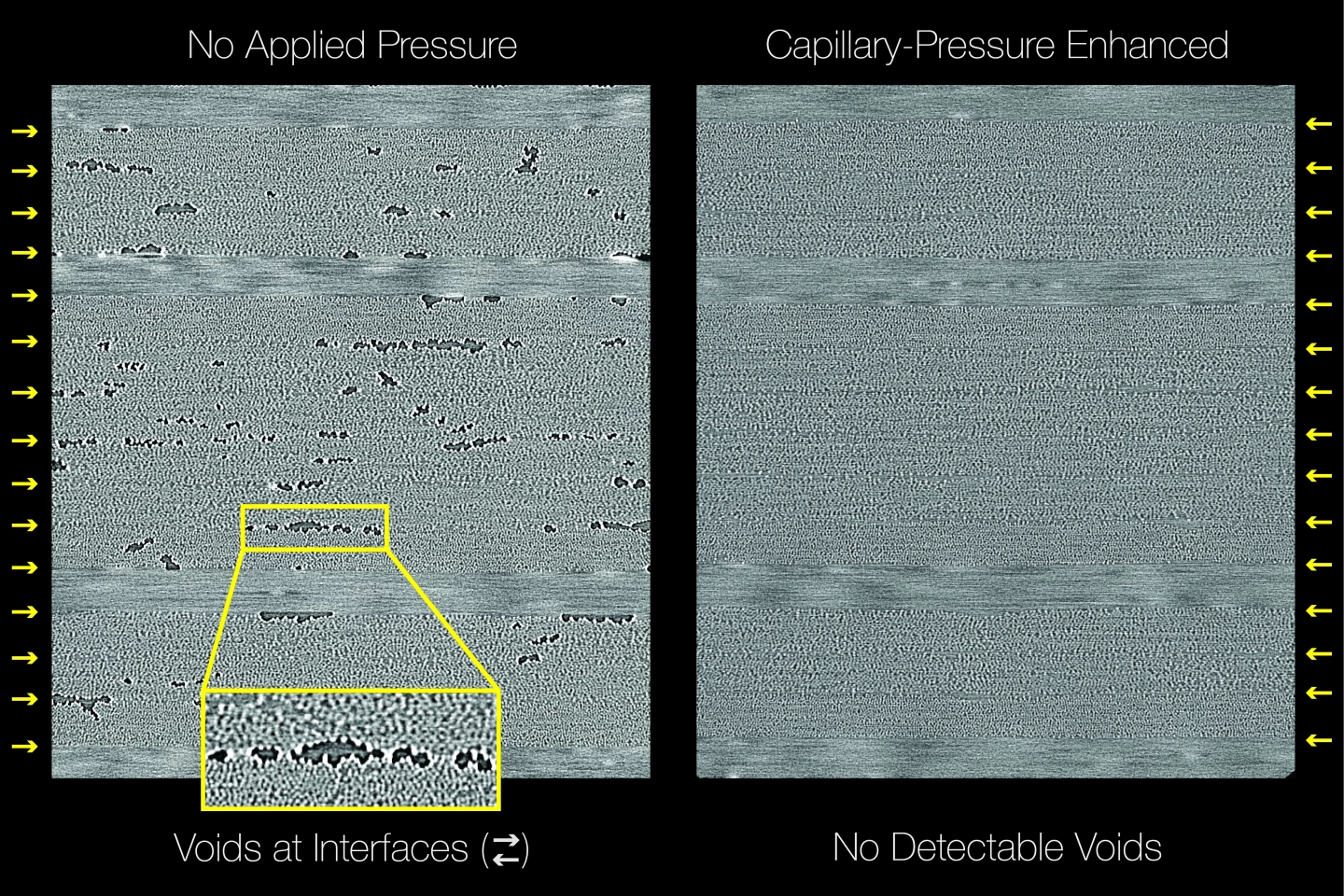Ordinarily, when composite items are being manufactured, huge ovens and autoclaves have to be utilized. The production process could soon be much simpler, cheaper and more energy-efficient, however, thanks to the use of carbon nanotube films.
Composites consist of stacked layers of structural material, which are bonded together via a resin or other matrix in order to form a solid. Large parts that are made of such composites have to be heated in enormous ovens – to cure the resin – plus they have to be subjected to great pressure within gigantic autoclaves, in order to squeeze unwanted air gaps out from between the layers.
A team at MIT is now looking at replacing the ovens and autoclaves with thin films made of carbon nanotubes. They're used as follows …
When a composite is being assembled, sheets of the film are incorporated into it, between each layer of material. When the part is subsequently heated, capillary action produced by the tiny channels between the nanotubes creates negative pressure, drawing the layers together. As a result, any air pockets that may have been present get squeezed out.

Additionally, a large sheet of the film gets wrapped around the item, once the part has been molded into the desired shape. Upon application of an electrical current, the nanotubes within the film heat up. This causes the entire sheet to emit heat – like an electric blanket – both triggering the capillary pressure and curing the resin.
So far, the researchers have successfully utilized the technique to make composite samples measuring several centimeters in width. They're now looking into scaling up the technology, so it could be used in the manufacturing of aircraft parts, wind turbine blades, gas pipes, and other items.
A paper on the research, which is being led by Prof. Brian Wardle, was published this week in the journal Advanced Materials Interfaces.
Source: MIT





